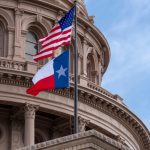Calls for government transparency are increasing as citizens want to know exactly what information governments have and how governments are spending taxpayer money. Cincinnati has taken these calls to heart and has invested roughly six months and $55,000 into 15 new dashboards that help educate and inform citizens.
California has budgeted $3 million to analyze high-resolution aerial images of 410 urban water suppliers’ areas throughout the state. Water regulators will combine data from those images with data on climate, as well as other factors, to assist state officials in calculating new community-specific conservation targets.
The Trust for Public Land is launching a platform called ParkServe that will contain urban park data from 13,931 cities and towns across the country, covering more than 80 percent of the population.
Civil rights advocates flooded a City Council hearing to protest the Boston Police Department’s plan to buy $1.4 million in social media monitoring software. Advocates questioned police promises to respect citizen privacy, as well as whether the technology can actually detect threats.
A team of scientists led by the National Institutes of Health published their analysis of using big data to track infectious diseases in The Journal of Infectious Diseases, and found that it can make surveillance more effective.
Deloitte’s report, “Next Gen Child Support,” outlines new approaches to improving services within child support enforcement. In particular, states are focusing on modernizing legacy IT systems to better leverage data and bring operational improvements.
More than 500 people have visited Oakland County’s new open data portal, which was launched Nov. 1 and offers access to 92 data sets.
Whether you’re going over the river or through the woods, Google Maps is ready to help you get to Grandmother’s house this Thanksgiving. The Google Maps team looked at historical Google Maps traffic data to help travelers avoid Thanksgiving gridlock. While the best time to leave has already passed, travelers can still avoid the worst travel time.
Donald Trump won the presidency in the wee hours of the morning of Nov. 9 to the shock of many people, including election forecasters. The poor quality of the big data used to create their forecasts may account for why so many people did not anticipate the election results.
The U.S. Department of Transportation is partnering with the National Oceanic and Atmospheric Administration to deploy two devices that will collect weather-related transportation data.














